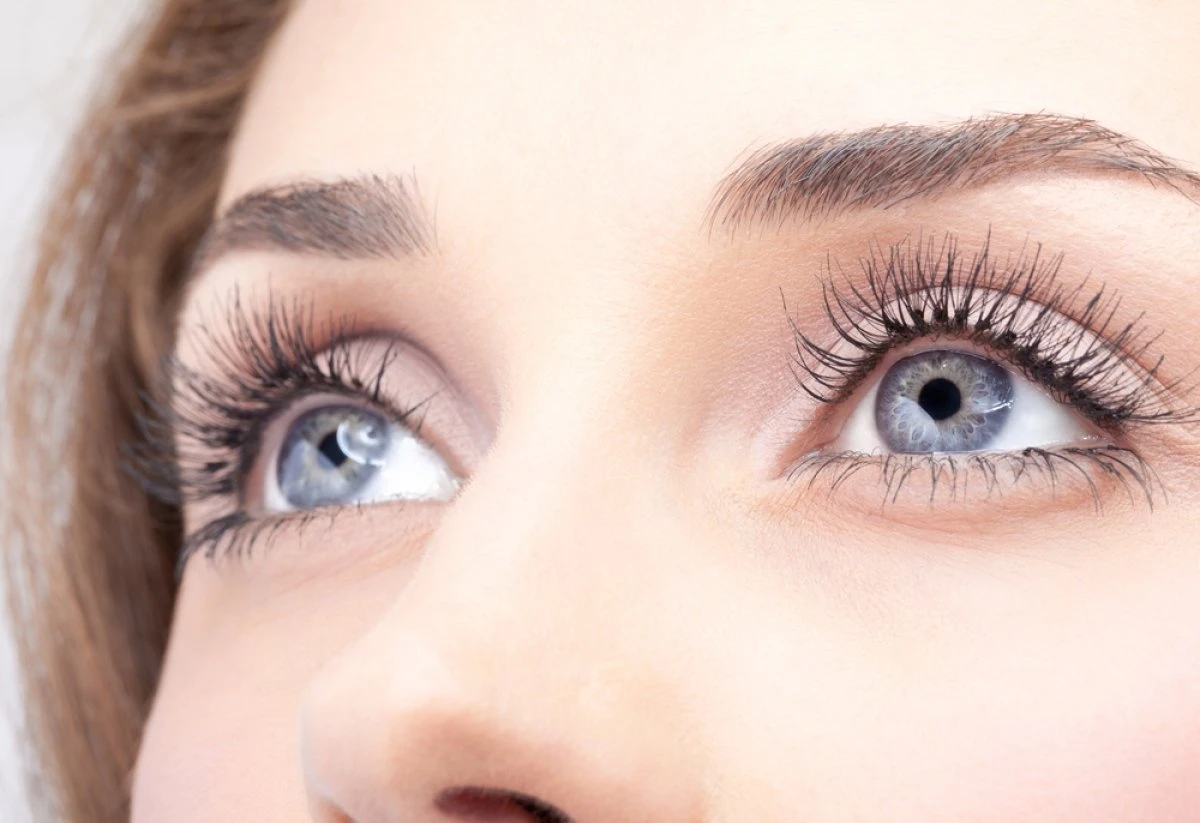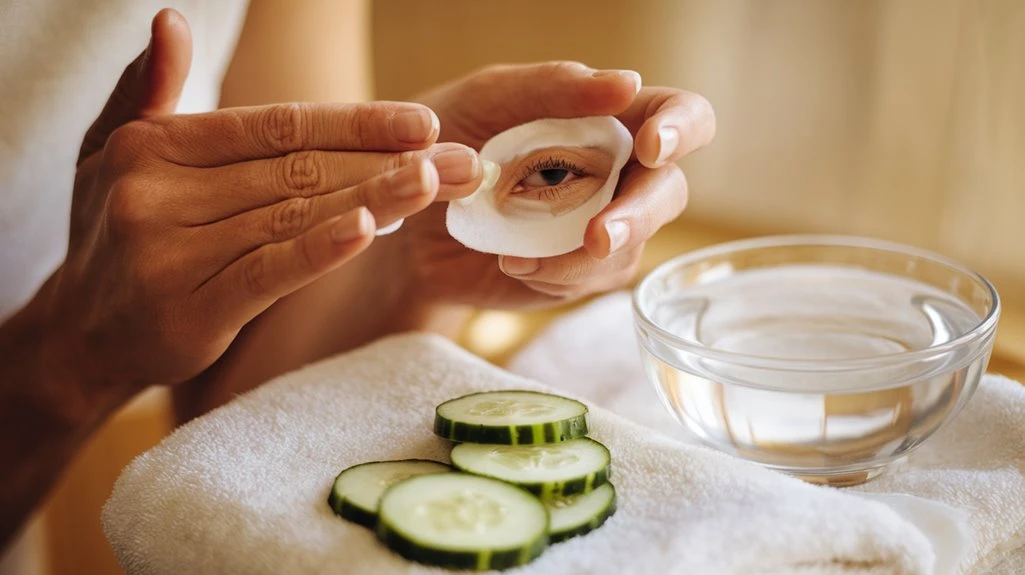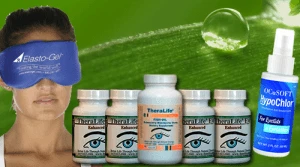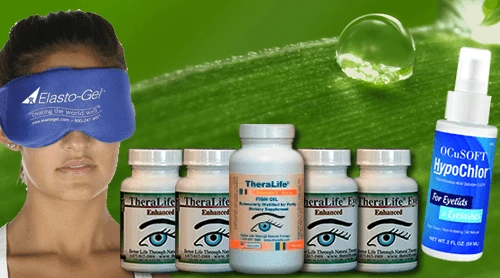To treat eyelid dermatitis effectively at home, consider how TheraLife’s products can enhance your care routine. Begin by gently cleansing your eyelids with lukewarm water and a fragrance-free cleanser, avoiding any rubbing to prevent irritation. Apply a cool compress to alleviate itching and swelling and moisturize with a hypoallergenic, fragrance-free product to protect the skin barrier. TheraLife offers a range of products that can support your skin’s health by addressing dryness and inflammation, common issues associated with eyelid dermatitis.
Identifying and avoiding potential triggers like cosmetics, soaps, or environmental irritants is essential. TheraLife provides guidance on managing these factors through evidence-based techniques and preventive steps. If symptoms persist or you notice changes in vision, it is crucial to seek medical attention immediately. With TheraLife’s comprehensive approach, you can effectively manage eyelid dermatitis and maintain healthy, comfortable eyes.
Best Blepharitis Treatment From TheraLife- When Drops Don’t Work.
Key Takeaways
- Gently cleanse eyelids daily with lukewarm water and a fragrance-free, mild cleanser, avoiding harsh rubbing.
- Apply a fragrance-free, hypoallergenic moisturizer or low-potency hydrocortisone ointment after consulting a healthcare provider.
- Use cool compresses on closed eyelids for 10–15 minutes, several times a day to reduce itching and swelling.
- Identify and eliminate triggers like cosmetics, soaps, and environmental allergens by systematically removing potential irritants.
- Seek medical attention if symptoms persist, worsen, or if you notice vision changes or signs of infection (pain, pus, severe redness).
Understanding Eyelid Dermatitis and Its Causes
Eyelid dermatitis, a form of skin inflammation, often causes redness, itching, and swelling around the eyes. You might notice that your eyelids become particularly sensitive, and even everyday products or subtle environmental changes can lead to discomfort.
The main causes of dermatitis on the eyelids include allergic reactions and irritant exposure. Your skin sensitivity may be heightened by genetic factors, making your immune system more reactive to ingredients in skincare, cosmetics, or even airborne particles.
Sometimes, chronic conditions like atopic dermatitis or contact dermatitis play a role, both of which increase your skin’s vulnerability. Because the skin on your eyelids is thinner than elsewhere, it’s more prone to developing symptoms. Eyelid dermatitis can also be exacerbated by the presence of Demodex mites, as they are known to contribute to inflammation and irritation around the eyes.
Recognizing these factors helps you understand why eyelid dermatitis develops.
Identifying Triggers and Irritants Around the Eyes
Have you noticed your eyes becoming irritated after using certain products or being in specific environments?
It’s important to systematically identify potential triggers and irritants around the eyes to manage eyelid dermatitis effectively. Common culprits include cosmetics, facial cleansers, lotions, and even hair products that may inadvertently transfer to the eyelid area.
Environmental factors such as pollen, dust, pet dander, and pollution can also worsen irritation. Assess your daily routine and product ingredients; fragrances and preservatives frequently cause discomfort. Practicing good eyelid hygiene means regularly evaluating items that come into contact with your eyes and minimizing unnecessary exposure. If you’re unsure about a specific trigger, try eliminating one product or environmental factor at a time, observing for improvements.
Additionally, using consistent warm compress application can aid in relieving discomfort by improving circulation and promoting natural drainage. This focused approach enhances safety and supports long-term skin health.
Practicing Gentle Eyelid Cleansing Techniques
A gentle cleansing routine plays a critical role in managing eyelid dermatitis and preventing further irritation.
To maintain proper eyelid hygiene, cleanse your eyelids daily using lukewarm water and a mild, fragrance-free cleanser recommended for sensitive skin. Avoid vigorous rubbing or scrubbing; instead, use a clean cotton pad or soft cloth, moving gently over the eyelid surface. Rinse thoroughly to remove any residue that may exacerbate irritation.
Pat dry with a clean, soft towel—never rub the delicate skin. Maintaining consistent gentle cleansing helps remove debris and allergens while preserving the skin’s natural barrier. An all-natural eye wash like the Eyelid And Eyelash Cleanser can be incorporated into your routine to soothe and refresh your eyelids and lashes.
Always wash your hands before touching your eyelids to minimize the risk of introducing irritants or bacteria. These steps support overall eyelid hygiene and reduce dermatitis flare-ups.
Choosing Appropriate Over-the-Counter Creams
When selecting over-the-counter creams for eyelid dermatitis, you should choose fragrance-free products to reduce irritation and allergic reactions. A low-potency hydrocortisone ointment can help decrease inflammation and itching, but only use it for a short period and avoid getting it in your eyes. Always consult your healthcare provider before starting new treatments, especially near the sensitive eye area. It’s important to be aware of associated conditions like body-focused repetitive behaviors, which can exacerbate eye-related issues like mucus fishing syndrome.
Selecting Fragrance-Free Products
Because eyelid skin is especially sensitive, you should prioritize fragrance-free products when selecting over-the-counter creams. Fragrances are a leading cause of contact dermatitis, and even small amounts can trigger or worsen eyelid irritation.
Carefully read product labels and choose creams specifically marked as “fragrance-free” rather than merely “unscented,” since unscented formulas may still contain masking fragrances.
To further reduce exposure, look for everyday personal care items such as fragrance-free shampoos and fragrance-free makeup. Avoiding hidden sources of fragrance in cleansers, moisturizers, and cosmetics decreases your risk of ongoing inflammation.
Evidence shows that eliminating fragrances from your skin care and beauty routine considerably improves symptom control and helps prevent recurrence of eyelid dermatitis.
Always patch test new products before full application to guarantee safety.
Regular eyelid cleanliness and care can significantly reduce the recurrence of eyelid dermatitis, as maintaining hygiene helps prevent inflammation and irritation.
Benefits of Hydrocortisone Ointment
Many dermatologists recommend 1% hydrocortisone ointment as an effective short-term option to relieve mild eyelid dermatitis symptoms, such as redness, itching, and swelling.
When you’re choosing over-the-counter creams, it’s important to understand hydrocortisone effectiveness and potential side effects. Ointment (rather than cream) is preferred for the delicate eyelid area because it causes less stinging and is less likely to irritate sensitive skin.
Evidence supports its ability to decrease inflammation and restore comfort when used properly. However, you should only apply a thin layer for a few days to minimize risks.
Hydrocortisone ointment should not be used during blepharitis flare-ups as it might aggravate the condition.
Here’s what you should know:
- Hydrocortisone reduces itch and inflammation.
- Ointment form offers better tolerability on eyelids.
- Use only short-term to avoid side effects.
- Prolonged use may cause thinning of eyelid skin.
Using Cool Compresses for Symptom Relief
One common approach people consider for soothing eyelid dermatitis is the use of cool compresses.
Applying a clean, soft cloth soaked in cool water to your closed eyelids can provide significant symptom relief by reducing inflammation, itching, and mild swelling. Evidence suggests that cool compresses help constrict superficial blood vessels and calm irritated skin without adding potential irritants. It’s important to note that avoiding eye makeup during active eyelid dermatitis can aid in the recovery process.
It’s important to use only water—avoid adding soaps, essential oils, or chemicals that could worsen the condition. Limit compresses to 10-15 minutes, two to four times daily, and always use gentle pressure. Use a clean cloth each time to prevent infection.
While cool compresses improve comfort, they won’t treat the root cause. Discontinue immediately if you notice increased redness or discomfort.
Allergen Avoidance Strategies at Home
Although eyelid dermatitis often stems from contact with allergens or irritants, you can greatly reduce flare-ups by identifying and minimizing exposure in your home environment.
Adopting careful allergen avoidance strategies should be a cornerstone of your self-care. Clinically, the most effective approach combines natural remedies and targeted lifestyle changes.
To create a safer home for your sensitive skin, use this evidence-based checklist:
- Identify and remove common culprits, such as fragrances, nickel, preservatives, and latex-containing products.
- Swap conventional cleaning agents for hypoallergenic, fragrance-free alternatives to minimize irritant contact.
- Avoid touching your eyes with unwashed hands and regularly disinfect items that contact your face, like pillowcases and phones.
- Consider patch testing with a dermatologist to pinpoint specific allergies and tailor your environment accordingly.
For those dealing with both dermatitis and dry eyes, hot compresses can help relieve symptoms by unclogging glands and promoting normal function.
Prioritize these interventions for ongoing symptom control.
Incorporating Moisturizers for Sensitive Skin
Because your eyelids have thinner, more delicate skin than most areas of your face, choosing an appropriate moisturizer becomes especially important for treating eyelid dermatitis.
Opt for fragrance-free, hypoallergenic moisturizer types such as ointments (like petroleum jelly or mineral oil) or creams containing ceramides. These help repair the skin barrier and reduce irritation.
Avoid lotions with alcohol or preservatives, as they’re more likely to cause stinging or allergic reactions.
For proper application techniques, use clean fingertips and apply a small amount gently across the eyelid, taking care not to rub or tug the skin.
Moisturize twice daily, ideally after cleansing, to lock in hydration.
In addition to moisturizers, warm compresses can improve blood circulation and reduce inflammation, which may aid in relieving symptoms associated with eyelid dermatitis.
This evidence-based approach can support healing, reduce dryness, and minimize further irritation in sensitive eyelid skin.
Best Blepharitis Treatment From TheraLife- When Drops Don’t Work.
When to Seek Medical Attention
You should see a healthcare provider if redness or swelling of your eyelids persists despite home care. Seek immediate attention if you notice changes in your vision or any signs of infection, such as pus or severe pain. Prompt evaluation is crucial to prevent complications and guarantee effective treatment. If eyelid swelling is accompanied by severe redness, pain, and inflammation, it may indicate an infection that requires urgent medical care.
Persistent Redness or Swelling
If redness or swelling of your eyelids doesn’t improve after a few days of proper treatment, it’s important to consult a healthcare professional promptly.
Persistent redness, swelling, or persistent itching could signal a more serious underlying issue or an infection requiring medical evaluation. Don’t delay seeking attention—early intervention helps prevent complications and guarantees you receive the correct treatment options based on your specific condition.
You should seek prompt medical care if you experience:
- Persistent redness, swelling, or itching after several days of appropriate home management.
- Symptoms that worsen or spread beyond the eyelids.
- Development of pain, warmth, or discharge from the eyelid.
- Recurrence of symptoms despite following all recommended treatments.
Monitoring your symptoms and acting quickly enhances safety and optimizes your recovery outcomes.
Vision Changes Occur
Although eyelid dermatitis often resolves without complications, vision changes such as blurriness, double vision, or difficulty seeing clearly necessitate immediate medical attention.
These symptoms may indicate that your vision health is at risk, and delaying care could lead to lasting problems. If you experience sudden eye discomfort, trouble focusing, or any unusual visual symptoms while managing eyelid dermatitis at home, don’t wait—contact an eye care professional right away.
While mild irritation and redness are common with this condition, any new or worsening vision changes suggest a more serious issue that can’t be safely addressed at home. Protecting your vision should always come first.
Prompt evaluation guarantees you receive appropriate treatment and reduces the risk of complications affecting your long-term eye health.
Signs of Infection
While eyelid dermatitis often improves with proper care, certain symptoms signal a possible infection and require prompt medical evaluation. An untreated bacterial infection or fungal infection of the eyelids can lead to complications.
You should stay alert for specific warning signs that suggest your condition has progressed beyond simple inflammation. If you notice any of the following, seek medical attention right away:
- Increasing redness, swelling, or pain—especially if it spreads beyond the eyelid.
- Thick yellow or green discharge—a classic sign of bacterial infection.
- Fever or feeling generally unwell—suggesting the infection may be spreading.
- Blisters, open sores, or crusting—which can indicate a fungal infection or secondary complication.
Timely intervention can prevent more serious problems and protect your eye health.
Tips for Preventing Recurrences
To reduce the risk of eyelid dermatitis returning, identify and avoid known irritants such as fragrances, harsh soaps, or specific cosmetics. Choose gentle, fragrance-free cleansers and moisturizers to minimize skin reactions.
Regularly clean items that touch your face, like pillowcases and makeup brushes. Adopting lifestyle modifications—such as limiting eye rubbing and managing stress—can support skin health, since stress sometimes worsens dermatitis.
Review your dietary considerations as well; some individuals find that food allergies or sensitivities can trigger flare-ups, so tracking your diet and noting any patterns may help. Ascertain your environment is free from common allergens, including dust mites or pet dander.
If you must use eye makeup, opt for hypoallergenic varieties. Consult your healthcare provider about ongoing prevention tailored to your specific triggers.
Best Blepharitis Treatment From TheraLife- When Drops Don’t Work.
Frequently Asked Questions
Can Eyelid Dermatitis Cause Blurry Vision or Eye Problems?
If you have eyelid dermatitis, you need strong symptom awareness, especially regarding vision concerns.
While eyelid dermatitis typically affects the skin’s surface, severe inflammation or rubbing can occasionally lead to blurry vision or irritation.
You shouldn’t ignore any sudden vision changes—these require prompt medical evaluation to rule out more serious eye problems.
Don’t self-diagnose; rely on evidence-based care and consult your healthcare provider if vision issues or unusual symptoms arise.
Is It Safe to Wear Contact Lenses With Eyelid Dermatitis?
About 50% of contact lens wearers experience some form of eyelid irritation.
If you have eyelid dermatitis, contact lens safety becomes a concern, as wearing lenses can worsen symptoms and increase your risk of secondary infections.
It’s best to avoid contacts during flare-ups and switch to glasses until your eyelids heal.
Consult your ophthalmologist before resuming lens use to guarantee your eyes are healthy and to minimize complications.
Are There Specific Pillowcase Materials That Reduce Flare-Ups?
Yes, you can reduce eyelid dermatitis flare-ups by choosing pillowcases made from silk or other hypoallergenic fabrics.
Evidence shows silk pillowcases create less friction and agitation against your skin, lowering the chance of irritation. Hypoallergenic materials also minimize exposure to dust mites and allergens that can trigger symptoms.
Always wash your pillowcases frequently with a gentle, fragrance-free detergent to maintain a clean, safe sleeping surface and further decrease flare-up risks.
Can Diet Changes Help Manage Eyelid Dermatitis Symptoms?
You can often manage eyelid dermatitis by identifying and avoiding food sensitivities that might trigger flare-ups.
Evidence suggests that some people benefit from an anti-inflammatory diet rich in fruits, vegetables, and omega-3 fatty acids.
However, don’t make drastic dietary changes without consulting a healthcare provider.
Clinicians recommend food diaries to pinpoint triggers and guarantee you’re meeting nutritional needs while reducing foods known to contribute to inflammation or allergic reactions.
Is Eyelid Dermatitis Contagious to Others?
You don’t need to worry about eyelid dermatitis transmission—it’s not contagious.
The condition typically results from an impaired skin barrier, allergies, or irritants, not from infection or direct contact. Scientific evidence shows you can’t “catch” eyelid dermatitis from someone else.
Still, keeping your own skin barrier healthy is important, so use gentle products and avoid potential allergens to reduce flare-ups.
If you notice oozing or infection, contact your doctor for further guidance.
Best Blepharitis Treatment From TheraLife- When Drops Don’t Work.
Conclusion
By incorporating TheraLife’s products into your routine, you can effectively manage eyelid dermatitis at home. These products help identify triggers, promote gentle cleansing, and provide safe creams for your delicate skin. TheraLife emphasizes consistent moisturization and allergen avoidance to ensure comfort and protection. Their comprehensive approach, supported by evidence, prioritizes prevention, protection, and professional guidance, helping maintain eye health and skin safety. If symptoms persist or worsen, consulting a healthcare provider is recommended.





